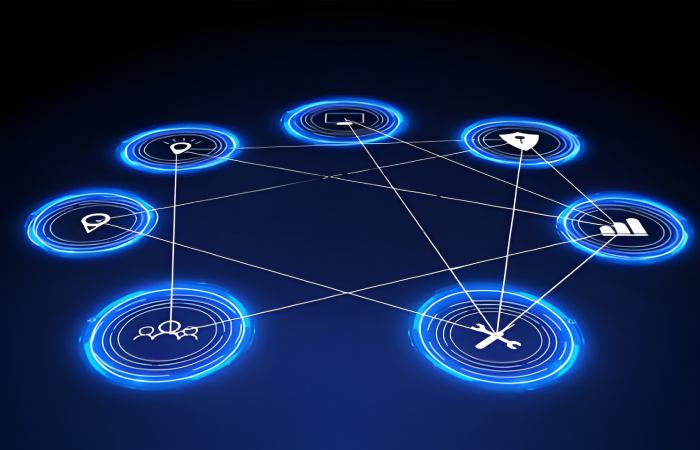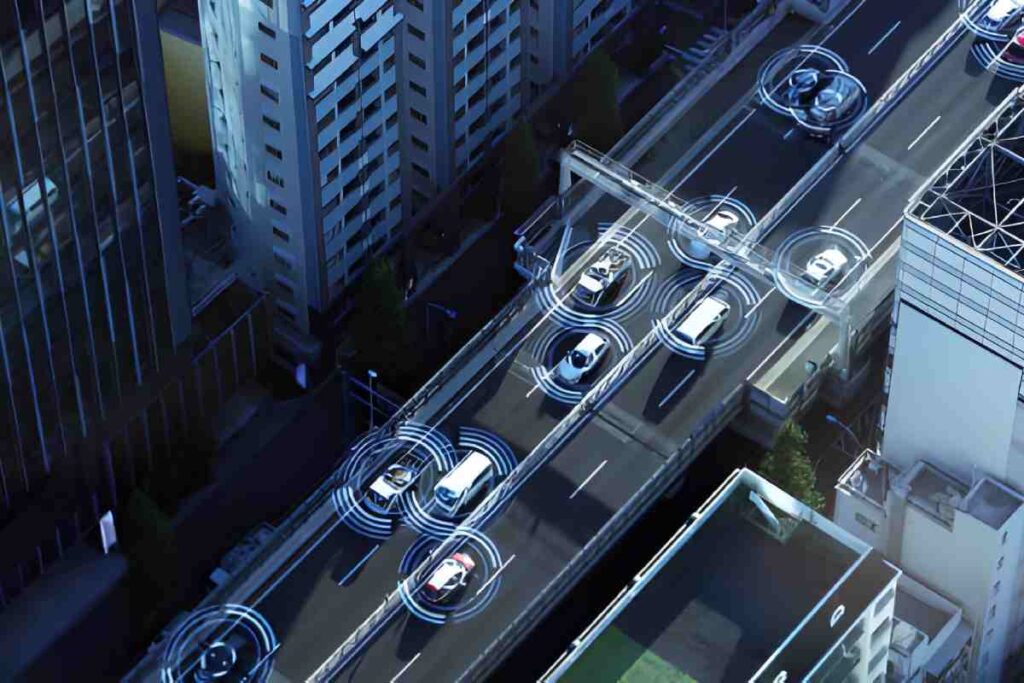Integrated into dynamic architecture and the digital industrial revolution, autonomous systems can compute data, conduct analysis, identify potential solutions, and implement them without human intervention. Combined with the Internet of Things and edge devices, these systems can leverage localized machine learning and distributed computing. This reduces the constant data flow to the cloud and enables near-real-time response.
Data analysis and device-level computing help reduce dependence on communication latency and uplink bandwidth while improving data security. This is especially relevant for industrial, medical, and transportation systems, where every millisecond and every data leak can be costly. Modern solutions integrating TinyML, edge multitasking (MLOps), and federated learning ensure continuous availability and control.
This article examines the system architecture, practical systems, core and supporting hardware. Real-world primary and secondary practical tasks, and the system design during implementation and multitasking edge computing (MLOps). It also offers constructive recommendations for quickly and securely implementing autonomous solutions for companies.
Definitions and the Role of Autonomous Systems in IoT
- An autonomous system consists of hardware and software components integrated into a device that can monitor its environment. Analyze data, and act accordingly without human intervention.
- Unlike fully automated systems, autonomous systems learn and adapt in real time, making decisions on the fly rather than following a predetermined script.
- In the Internet of Things, autonomy relies on the local computing power of edge devices. Instead of transmitting every signal to the cloud, the system processes the information at the edge.
- This local approach reduces latency, reduces network dependency, and provides greater fault tolerance. This fault tolerance is vital in industrial plants, life-support medical devices, and transportation systems, as a disappointment in these systems can have catastrophic consequences.
- These answers are based on machine learning and artificial intelligence. Models examine data to identify patterns and make predictions based on sensor signals. These computations, performed at the edge, gradually transform an ordinary device into a node capable of making autonomous decisions. In the Internet of Things context, autonomous systems perform two primary functions: infrastructure resilience and responsiveness. Systems that don’t wait for external commands but respond to the situation, such as when speed is critical, perform best.
Critical Frameworks and Edge Intelligence Techniques

Self-managed Internet of Things (IoT) systems rely on local information processing. Processing occurs at the minimum possible distance from the signal source: the device or the nearest network node. This structure protects the system from connection interruptions, reduces dependence on the cloud, and eliminates potential bottlenecks.
System Architecture
Architecture can be divide into three primary levels:
- Cloud layer: responsible for advanced data analysis and archiving.
- Edge nodes: enable machine learning systems.
- Sensors and actuators: dynamically collect data.
Technological Layers and Functions
Each level uses a different configuration of technologies and responsibilities, as shown below:
| System Level | Main Functions | Key Technologies | Example Devices |
| Sensor Layer | Collect and transmit signals; initial filtering of raw data | LoRaWAN, Zigbee, BLE, MQTT | Temperature sensors, pressure sensors, motion sensors |
| Edge Node Layer | Model inference, local analytics, short-term decision-making | TinyML, TensorFlow Lite, PyTorch Mobile, ONNX | SBCs (Raspberry Pi), industrial controllers |
| Cloud Layer | Centralized model training, data storage, orchestration, and long-term analytics | Federated Learning, Edge MLOps, Kubernetes, Docker | Cloud servers, data centers |
Functional Summary
The edge layer is the core of the system. Thanks to TinyML and its optimize models, complex algorithms can be run on devices with minimal resources. Decisions are made here in milliseconds.
The cloud layer, in turn, is responsible for model retraining, coordination, and long-term structural analysis.
This division of labor facilitates scalability. New devices can be added to the system without replacing the entire infrastructure. This is important in industry, transportation, smart cities, and healthcare, where the number of connected nodes rapidly increases.
Practical Implementations of Autonomous Edge Systems
Autonomous systems with local intelligence are already widely used in many other industries. They automate individual tasks and reimagine infrastructure management models, enabling decision-making closer to the source of events. In industry, these systems facilitate predictive maintenance, as sensors detect wear and tear associated with microvibrations and temperature changes. In the case of edge predictive maintenance models, these patterns and patterns related to system wear are analyzed in the field. This prevents downtime and accidents at critical stages of the work cycle.
In transportation, autonomous systems coordinate signals and flows simultaneously and instantly. Improving overall traffic flow with virtually no access to a central server. Local systems in self-driving cars operate at the edge, processing machine vision data, local lidar, and other data. A stable cloud is not required for response.
In these examples, local decision-making is critical. Local decision-making facilitates risk management, speed, and responsiveness to most scenarios.
Challenges and Limitations of Edge Autonomy
Despite their apparent advantages, autonomous edge systems will face several ongoing challenges. While these limitations may be less evident at the design stage, their impact on the overall system’s flexibility is enormous.
In the case of limited computing resources, the situation is even worse than the cloud. Edge devices have limited memory. Processing power, and compute capacity. Consequently. Machine learning models must be significantly optimized for size, complexity, and accuracy, and quantization and compression must be applie. Models cannot be sacrifice; otherwise, autonomy becomes meaningless.
The second challenge is data and model drift. Over time, the context in which the system operates changes. Sensors, devices, and signals behave differently. If a model becomes static, accuracy also declines, in this case, a well-structured retraining cycle is warranted. In which edge models are periodically synchronized with a central database in the cloud to retrain on new data.
Regarding security, devices are often deployed in field environments where maximum physical and cybersecurity is required: on factory floors, in mobile environments, and in urban settings. Access control to edge devices is relatively less secure than in physical data centers. Making them vulnerable to attacks that could alter data, models, or the structure of model nodes. Defenses against these attacks rely on strong encryption, strict control of authenticated users, and active system-based statistical anomaly detection.
Finally, coordinating a large number of devices becomes a challenge.
- As the network size grows, model consistency and homogeneity decrease. Engineering challenges with increasing device count include updating, diagnostics, and maintaining version control,
- Finally, there are testing challenges.
- The behavior of an autonomous system depends on several aspects of the system. Such as sensor status, connectivity, and the surrounding environment.
- The system must cope with such uncertainty and remain stable under such conditions. It is impossible to predict every situation during the system development phase.
- Understanding design assumptions and constraints isn’t an intellectual error;
- instead, it’s the essence of design. Understanding a system’s limitations leads to increased reliability and longer service life.
Surpassing the Limitations
- Building autonomous edge systems is a complex engineering challenge. Autonomous systems are not isolated configurations and must be integrate with other systems. Some limitations must be addressed through optimization, structural design, focus, and robust analytics.
- One of the most important strategies is model compression and a minimalist architecture. Quantization, pruning, and knowledge extraction make this possible due to their precision. Technologies like TinyML enable complex algorithms to run on microcontrollers with minimal RAM, saving energy in autonomous systems and systems with low-power nodes.
- Federated learning is a method use to combat data drift. These local systems are trained on local data and only feed the weights to the update model. The central model aggregates and synchronizes the collected information with the rest of the network. This ensures the original data remains secure, and the system model remains up-to-date.
Security Issues are Address at the Network Architecture Level.
- IoT devices have encrypted storage, secure boot, and digital signatures. Data and system behavior layers are monitor for early detection and isolation of potential threats. Coordination of multiple devices is implemented through an MLOps workflow. Diagnostics and updates are automated. Model versions are stored in a central repository, and the entire network is monitore.
- These capabilities significantly simplify complex architectures, ensuring predictable performance,
- Testing is conducted in stages.
- Models are first validated on selected nodes and then deployed to the entire network. This approach minimizes potential failures and facilitates adaptation to real-world conditions.
- The trend toward autonomous systems is expect to continue to grow. Each new generation of microcontrollers offers greater capabilities. Devices with hardware accelerators can now manage the entire neural network on their devices. The future of federated learning and distributed MLOps enables seamless autonomous training and updates at a lower level. Model adaptability (the ability of an organism to adapt to the environment) is crucial in industry, transport, and healthcare.
Conclusions
The introduction of Autonomous Systems is redefining digital infrastructure, Increasing proximity to the data source minimizes latency. and improves resilience. These systems result from research and development in artificial intelligence and machine learning for devices with limited computing resources.
Solving technological challenges is an incomplete task. These systems result from an Internet of Things architecture that strives for coordinated, dynamic, and optimal operation. In the context of ever-expanding device networks, these architectures are the foundation of next-generation digital ecosystems.

